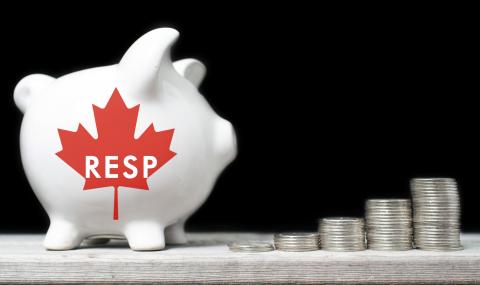Submitted by nsscadmin on

School’s back in session, and if you’re a parent of a child who just starting school or heading into their last year of high school you may be wondering how you’re going to pay for their post-secondary education. Even if your child was just born yesterday, you may have university tuition on your mind because 18 years can go by pretty fast.
To help with the tuition burden many parents research registered education savings plans, or RESPs. Is an RESP right for you and your post-secondary education savings goals? Let’s do a quick review of RESPs to find out.
An RESP is a tax deferred investment account used for post-secondary education. RESPs can be opened at most financial institutions including banks, credit unions, and investment firms. An RESP can be opened for an individual, or if you have more than one child as a family plan. You can also open an RESP through a scholarship plan dealer. These are companies that only offer RESPs and were covered thoroughly in a previous post.
One very important difference when it comes to scholarship plan dealers is that they also offer what are known as Group RESP plans. Each group plan is different and comes with it owns set of rules and regulations. The plan’s rules and regulations must be outlined in a prospectus. You should always read and fully understand the prospectus before purchasing an RESP group plan. When reading a scholarship plan’s prospectus make sure you know and understand:
- what your contributions are and when they’re due,
- what terms you must follow throughout the entire time you’re in the plan,
- any possible penalties or fees you could be assessed if you leave the plan early,
- how much and how often your child can take payments and which education programs are eligible.
Contributing to an RESP gives you access to additional fund supports offered by the Canadian government. These programs include the Canada Education Savings Grant and the Canada Learning Bond.
The Canada Education Savings Grant is only available for RESP’s where children are under the age of 17. This grant is a federally funded program that provides additional funds alongside those you invest in an RESP. Through the Canada Education Savings Grant the government will match 20 per cent of your contributions per year up to $500. The maximum funds you can receive through the program is $7,200. Lower income contributors can sometimes qualify for more. For more information on the Canada Education Saving Grant visit this website.
The Canada Learning Bond is available for children from low-income families. The Government of Canada contributes up to $2,000 to an RESP for an eligible child through this program. To find out if you are eligible and for more information on the program, visit this website.
Once the person enrolls in a post-secondary institution the money in the RESP can be withdrawn. The money in an RESP grows tax free, but the contributions are not tax deductible. Any interest, dividends or capital gains are taxable when withdrawn, as is any of the federal grant money. As most students have little income while in school, the RESP withdrawals generally have a lower tax burden.
When determining if an RESP is right for you always take into account your saving goals, your financial situation now and in the future, and the amount risk you are able to take on. Before signing anything or contributing any money to an RESP always read the fine print to ensure you know the rules around getting your money out.
